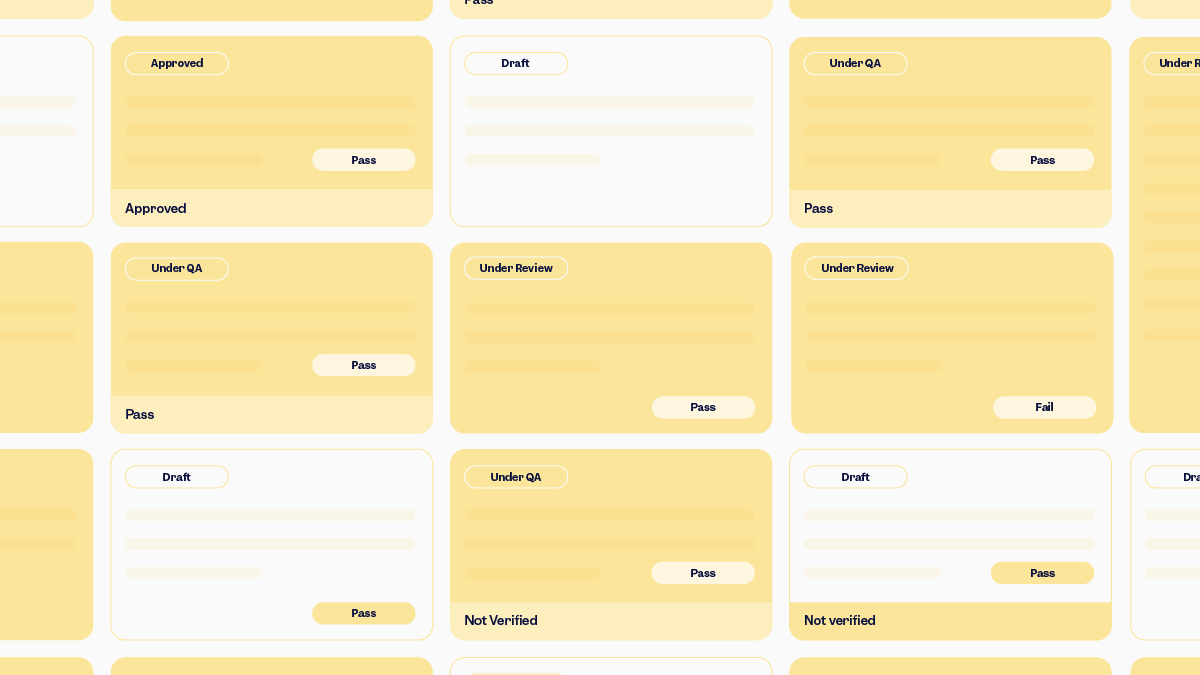
I’m willing to bet you’re here because of a specific incident.
Maybe it was during a batch record review, you saw a signature next to a step that you know, for a fact, was not performed correctly.
Or maybe an internal audit uncovered that a whole team was using a "workaround" for a procedure you spent a month perfecting.
It’s the kind of thing that makes your stomach drop. You’ve done everything by the book, yet achieving consistent SOP compliance feels like an uphill battle. We're the guardians of the quality system, and it's frustrating when the documents we create aren't being followed.
This piece is for my fellow quality and regulatory professionals in the life sciences. We’re going to get into the real reasons why employees do not follow procedures. We will also cover the serious consequences and, most importantly, I’ll share practical advice on what to do when employees do not follow procedures.
This isn't theoretical, it's advice from the trenches.
Key takeaways
Common reasons: Why employees do not follow procedures
If you want to know why employees do not follow procedures, you have to put on your detective hat. The initial deviation is just a symptom of a deeper issue. After years of investigations, I've found the root causes usually fall into a few familiar categories.

The SOP is impractical
I once saw an SOP for operating a piece of lab equipment that was technically flawless. The problem? It required the operator to log out of the system to access the SOP on the workstation, but they needed to be logged in to perform the steps. It was a classic catch 22 written by someone who had never actually run the machine. When a procedure is physically awkward or logically impossible to follow while doing the job, people will inevitably create their own process.
The training was a formality
We've all seen it. New employees are sat in a room, given a stack of SOPs to read, and asked to sign a training log. Can we honestly expect them to absorb and retain every critical detail? Real learning happens with hands-on practice and context. Without it, the training record doesn't prove competency; it just proves they sat in a chair for an hour. This is a primary reason why employees do not follow procedures.
They don't know the 'why'
People need to understand the reason behind a rule to respect it. I remember a technician who regularly skipped a five-minute pH stabilization step because it felt like wasted time. It wasn't until a batch failed and I explained that the step was important for guaranteeing drug product stability that the lightbulb went on. If you don't explain the 'why', you can’t expect your team to treat every step as critical.
Now that you know the main reasons why employees don't follow SOP, let's dive into why SOP compliance is so important and how you can encourage it!
The risks of poor SOP compliance
Your boss asks you, what happens if policies and procedures are not followed? It's not just a rhetorical question; it's a business risk. The fallout from weak SOP compliance can be severe and costly.
First and foremost is the regulatory heat. Let’s be very clear.
An analysis of FDA inspection data consistently flags "Procedures not in writing, fully followed" under 21 CFR 211.22(d) as a top reason for issuing a Form 483.
It’s low-hanging fruit for investigators. That 483 can easily escalate into a full Warning letter for not following SOP. I’ve seen the panic that a Warning letter for not following SOP causes.
It brings intense scrutiny, demands a mountain of paperwork in response, and can jeopardize product approvals. The fear of getting another Warning letter for not following SOP should be a massive motivator.
When people ask me what happens if policies and procedures are not followed, I tell them to think beyond the audit.
Poor SOP compliance leads to process variability, which is the enemy of quality. It causes out-of-specification results, painful deviation investigations, and can even lead to product recalls.
Scilife Tip:
Every time a procedure is not followed, you are introducing an unknown variable into your validated process, and that is a dangerous game to play in our industry. So you must know what happens if policies and procedures are not followed.
*It’s easy to get lost in the day-to-day paperwork, but it's worth remembering the stakes we're playing for. The medical device industry, for example, is on track for massive growth, with global sales projected to climb by more than 5% each year to reach nearly $800 billion by 2030.
With that kind of growth comes incredible pressure and complexity. More products, more technologies, and more markets all introduce more risk. It’s a reminder that the SOPs we write and enforce are the protection needed to keep this massive, expanding industry safe and effective.
Recommended learning: Don’t just write SOPs. Write SOPs that stick. Read our guide to learn how.
Best practices for SOPs: How to ensure SOPs are followed?
So, here's the question: what to do to ensure SOPs are followed? The answer is to stop policing and start collaborating. You have to build a system that guides people to the correct action.
1. Write SOPs with your users, not for them
My best advice is to take your draft SOP and walk the floor with the technician who will actually use it. Have them talk you through the process. You’ll be amazed at what you learn. This collaboration creates a sense of ownership. It’s no longer your document; it’s their document. Their buy-in is the single greatest factor in achieving good SOP compliance.
2. Design for clarity and speed
Think of an SOP as a tool. Use simple language. Keep paragraphs short. Use lots of headings, bullet points, and tables. If a picture can explain a complex connection, use a picture. The goal is for a qualified user to be able to find the exact piece of information they need in 15 seconds or less.
3. Champion a 'process over person' culture
When a mistake happens, the first question should never be "Who did this?" It should be "How did the procedure let this happen?". When you create a safe environment for people to point out flaws in an SOP without fear of blame, they become your eyes and ears. You can't be everywhere at once. A proactive quality culture is important if you don't know what to do when employees do not follow procedures.
4. Use technology to make it easy
Let’s be realistic, manual systems are prone to error. This is where a modern eQMS platform like Scilife becomes invaluable. It solves the version control problem for good, making sure nobody can ever access an obsolete document. It can physically link training modules to procedures, meaning a person simply cannot be marked as trained until they have passed the competency test. It makes your entire quality system smarter and more resilient.
SOP compliance is simple when you know how!

Conclusion
You can't stand over everyone’s shoulder to make sure they follow the rules. That approach will never work. The only way to get real SOP compliance is to fix the system itself.
That means writing instructions that actually make sense on the manufacturing floor, making it safe for someone to raise their hand and say, “This procedure is wrong”, without fear of blame, and giving your team the right tools for the job.
This is where a platform like Scilife makes a practical difference. It’s built to solve the problems we’ve talked about. It puts the correct, current SOP in front of people every time, eliminating the risk of using an old version.
It links training records directly to the procedure, so there’s no gap between knowing and doing. It makes the right way to do the work the easiest way. You can stop fighting daily fires and just have a system that works.
.jpg)








